ChatGPT bot in Python
In the last few months, people have been releasing a record number of AI-powered software. Of course I could not stay out of it.
And so the pokitoki project was born. It's a a Telegram chat bot built using the ChatGPT (GPT-3.5 or GPT-4) language model from OpenAI.
Notable features:
- Both one-on-one and group chats.
- Direct questions, mentions, follow-ups.
- Access external links (articles, code, data).
- Shortcuts (custom AI commands).
Personal chats
The bot acts as your personal assistant:
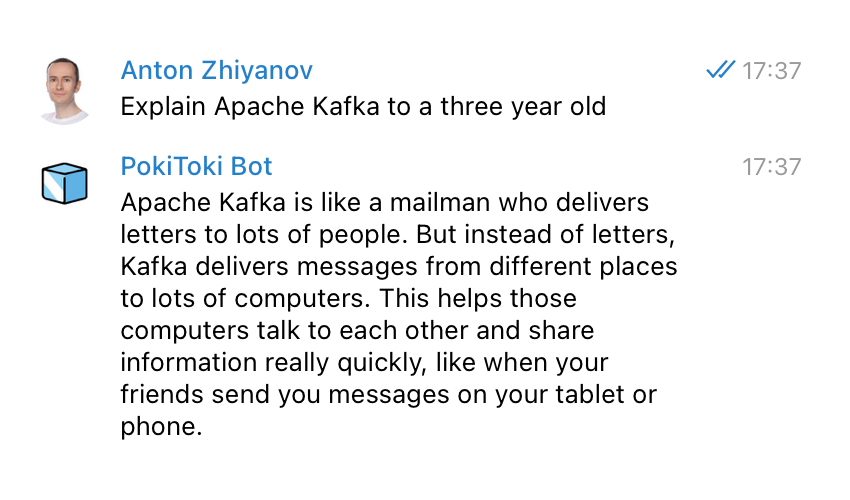
To allow other users to use the bot, list them in the telegram_usernames config property.
The bot has a terrible memory, so don't expect it to remember any chat context by default. You can, however, reply with a follow-up question (Ctrl/Cmd + ↑). Alternatively, use a plus sign to follow up:

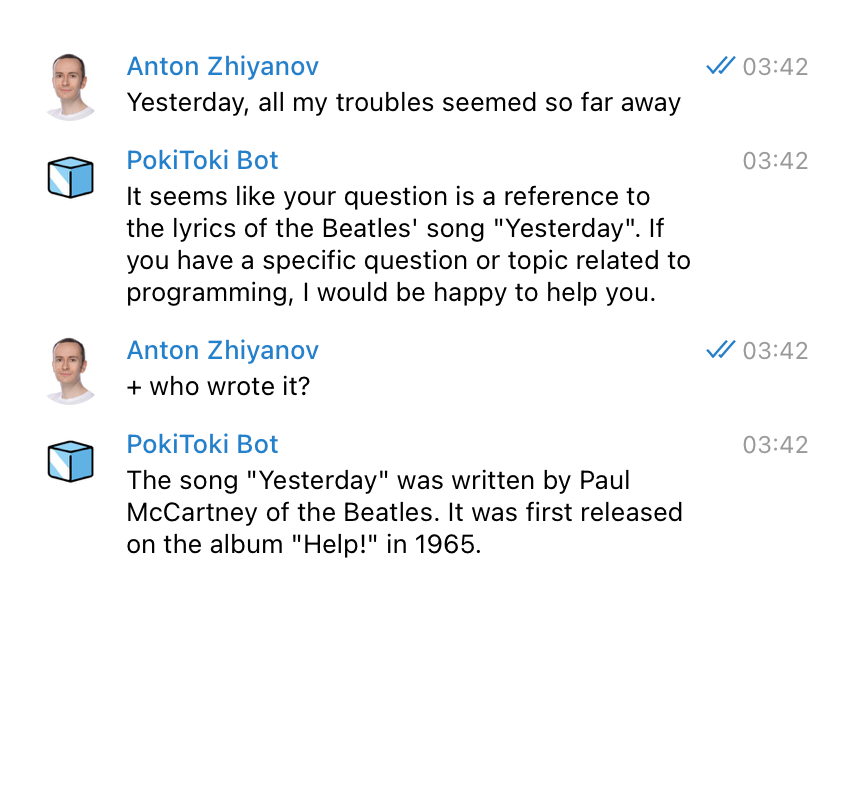
Available commands:
/retry- retry answering the last question/help- show help/version- show bot info
Groups
To get an answer from the bot in a group, mention it in a reply to a question, or ask a question directly:
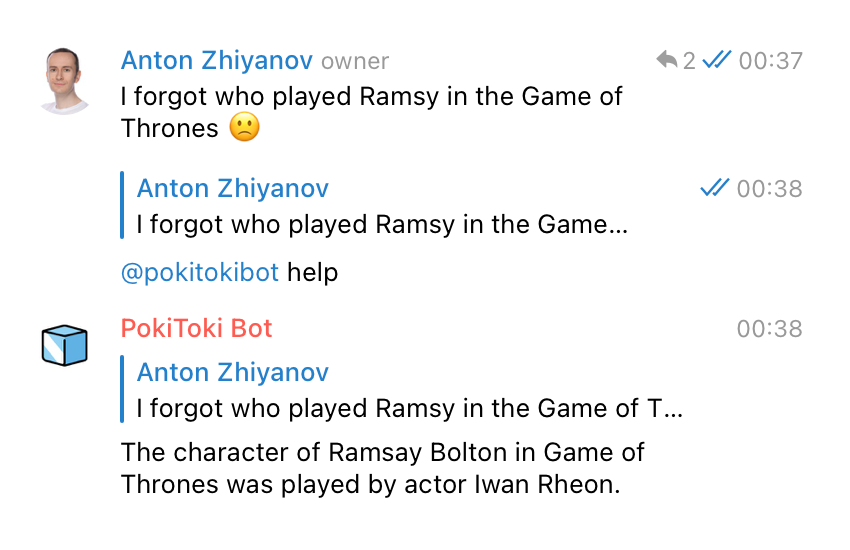
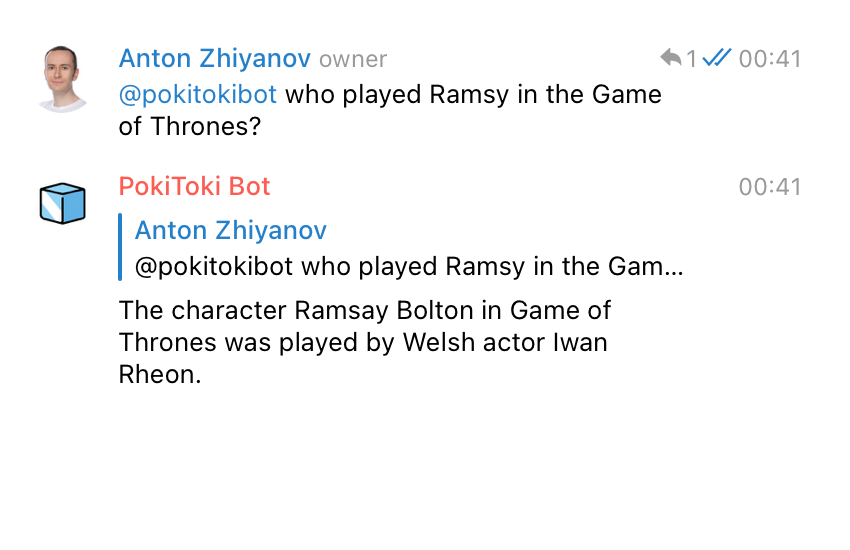
To make the bot reply to group members, list the group id in the telegram_chat_ids config property. Otherwise, the bot will ignore questions from group members unless they are listed in the telegram_usernames config property.
If you don't know the group id, run the /version bot command in a group to find it:
Chat information:
- id: -1001405001234
- title: My Favorite Group
- type: supergroup
...
External links
If you ask "vanilla" ChatGPT about external resources, it will either hallucinate or admit that it doesn't have access to remote content:
Q: What is the content of https://sqlime.org/employees.sql? Make no assumptions.
A: As an AI language model, I cannot access external URLs on the internet.
The bot solves the problem by fetching the remote content and feeding it to the model:
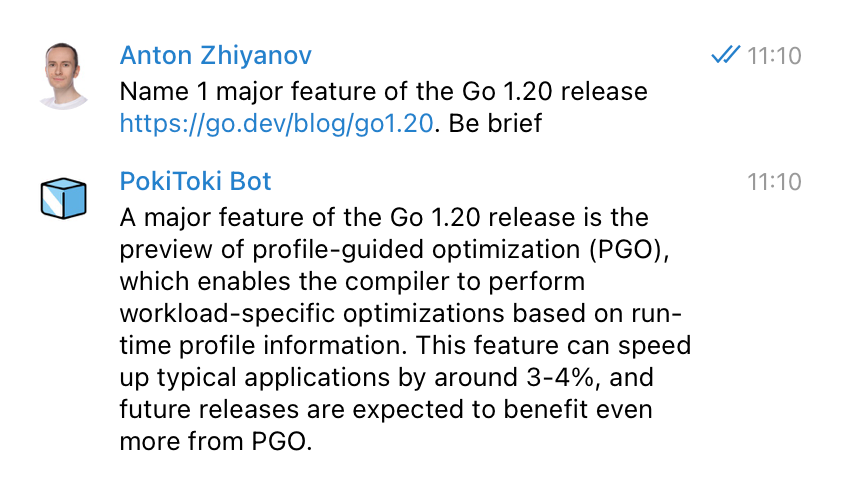
Currently only supports text content (articles, code, data), not PDFs, images or audio.
Shortcuts
Use short commands to save time and ask the bot to do something specific with your questions. For example, ask it to proofread your writing with a !proofread command:
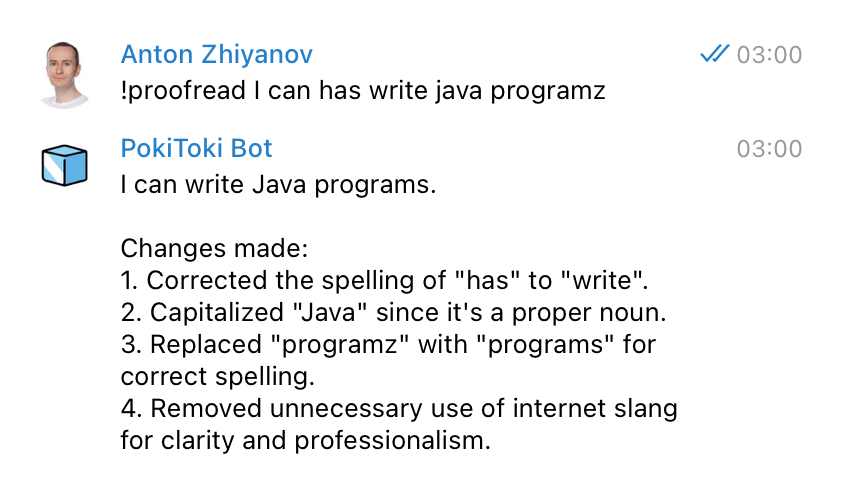
There are several built-in shortcuts:
bugfixfixes your code.proofreadfixes your writing.translatetranslates your text into English.summarizegives a two paragraph summary of a text.
You can add your own shortcuts. See config.example.yml for details.
Other useful features
The convenience of working with a bot is made up of small details. Here are some situations where it can save you time and effort.
Forwarding
Say you received a message from a colleague or read a post on a channel and want to ask a question. Simply forward the message to the bot and answer the clarifying question it asks:
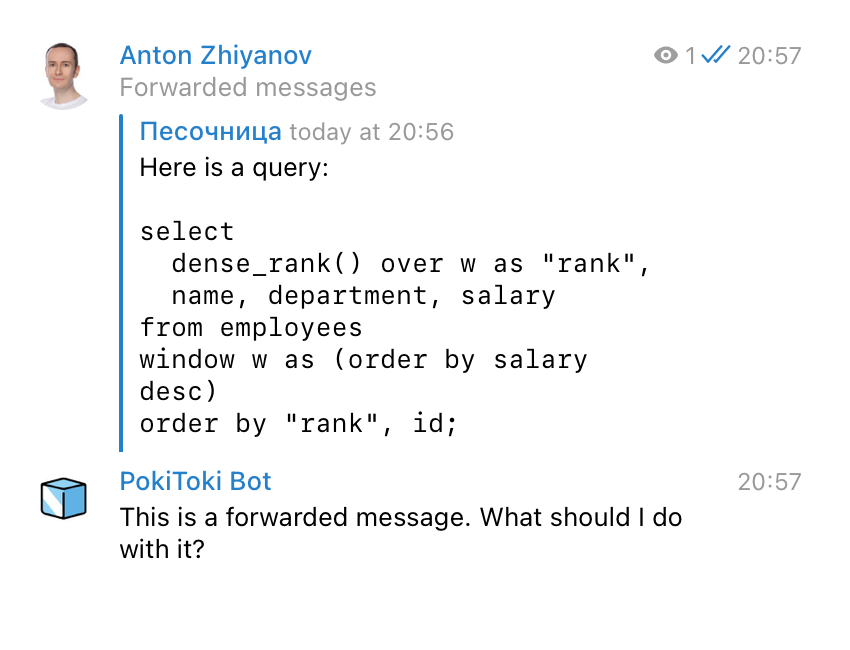
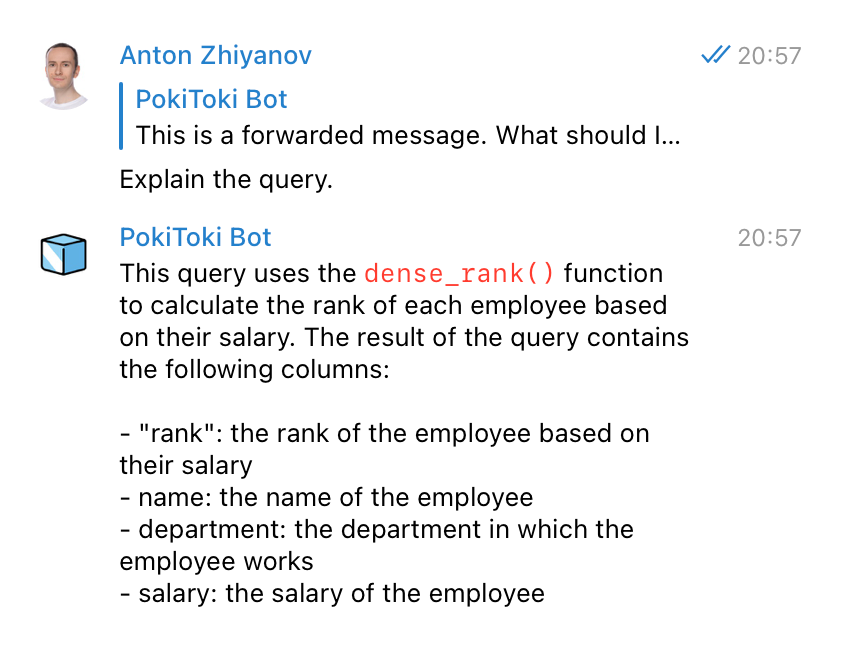
Reply with attachment
Sometimes the AI's reply exceeds the maximum message length set by Telegram. In this case, the bot will not fail or spam you with messages. Instead, it will send the answer as an attached markdown file:
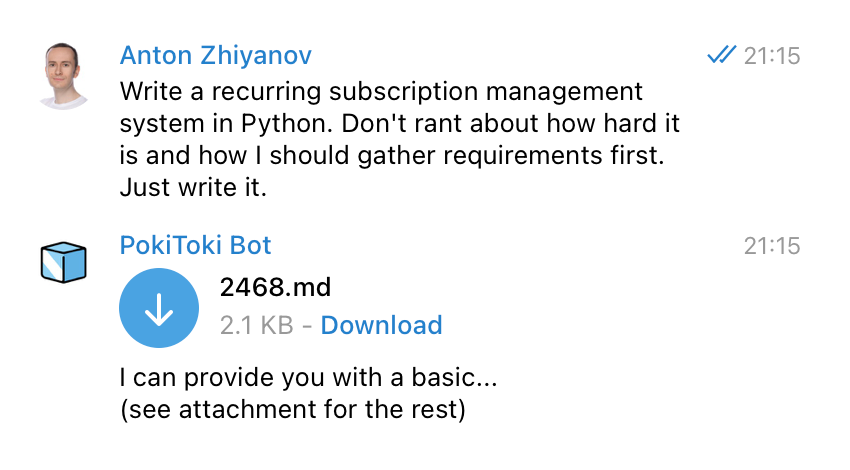
Editing questions
To rephrase or add to the last question, edit it (↑ shortcut). The bot will notice this and respond to the clarified question.
Bot information
Use the /version commands to print detailed information about the current chat, bot, and AI model:
Chat information:
- id: -1001405001234
- title: My Favorite Group
- type: supergroup
Bot information:
- id: 5930739038
- name: @pokitokibot
- version: 70
- usernames: 6 users
- chat IDs: []
- access to messages: True
AI information:
- model: gpt-3.5-turbo
- history depth: 3
- shortcuts: ['bugfix', 'proofread', 'summarize', 'translate']
Setup
- Get your OpenAI API key
- Get your Telegram bot token from @BotFather
- Copy
config.example.ymltoconfig.ymland specify your tokens there. - Start the bot:
docker compose up --build --detach
To stop the bot:
docker compose stop
For older Docker distributions, use docker-compose instead of docker compose.
★ Subscribe to keep up with new posts.